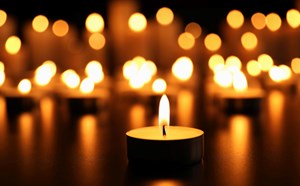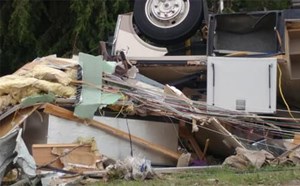
Reflections on the Response to a Resident Physician Strike in New York City (NYC)
Interviewer: Mr. Ryan Leone
Interviewees: Dr. Laura Iavicoli, Dr. James Salway
From the morning of May 22 to May 27, 2023, New York City Health + Hospitals/Elmhurst in Queens, also known as Elmhurst Hospital Center, faced the first resident physician strike in NYC over the last 50 years. This piece contains some brief excerpts from an interview with two emergency medicine (EM) physicians who played critical roles in the strike response: Dr. Laura Iavicoli, the deputy chief medical officer at Elmhurst, and Dr. James Salway, the senior director of clinical operations for New York City Health + Hospitals’ Central Office of Emergency Management.
How do you think dealing with other disasters prepared you to deal with the strike?
Laura: COVID-19 is the one that comes to mind. I feel like the major things I learned were communication, collaboration, central command, and situational awareness. Those were what I took away from standing up the COVID-19 system response and that is what I prioritized here. Otherwise, it’s all going to fall apart. Communicating up, down, and across from supervisors and leadership to front-line workers was essential, too.
James: I agree with Laura - those are some highlights. I think we’ve applied those to a lot of issues since then too, including the pediatric respiratory surge last year. During the pandemic, we learned some really important lessons about how to best communicate to our front-line staff to maintain trust and cohesiveness. We’ve continued to emphasize that culture of transparency and communication in subsequent responses.
How did this strike affect disaster planning in the local community?
Laura: The strike was discussed in the news, which helped make the community aware of the option to postpone any non-vital appointments if they were able to do so.
James: Also, if some other emergency or disaster affected the local community and drove up patient demand relative to provider supply even more, we were already prepared to go into diversion or level load patients.
What is the most important recommendation you would give to a hospital facing a strike?
Laura: Begin the recruitment process of external providers early to get a feel for all of your staffing options while maintaining enough lead time. You should run these processes in parallel to any internal staffing plans you try to make. If we had to do it again, I would say we should have both the internal and external staffing discussions running at the same time.
James: Plan for the worst and hope for the best. The phrase may be overused and cliché, but that doesn't make it wrong. You should start planning as soon you hear that a labor action might occur and explore every avenue of staffing available.
What operational changes did you implement during the strike response that you think will continue under blue skies settings?
James: We formalized our rapid patient discharge plan to utilize for other hazards that affect hospital capacity. We also formalized a written protocol for patient surge transfers, which we used minimally during the labor action, but now have codified for when it is needed. We also created a labor action toolkit that we can use any time another facility in our system faces a strike. We’ve taken what was done on the fly and put it in a form that can be used within our system at the drop of a hat.
Laura: As James said, it was really about the codification of plans we used informally in the past. The ones I would highlight are streamlining discharge workflows, expanding home care services, and growing patient navigator services that were stood up during the response.
What part of the strike response do you think most facilities would overlook?
James: Demobilization is often the forgotten stepchild of disaster response. We’d recommend that facilities start planning for the end of the strike at the beginning. The focus on getting people back to work and feeling comfortable with their colleagues was particularly important, alongside the operational side of making sure the hospital functionality returned to normal.
Laura: As soon as we heard about the negotiations’ agreement, everybody wanted to say, “Okay great, we’re done.” Not as many people realized that we were going to continue this demobilization effort through the following Tuesday; in fact, the actual demobilization over five days was longer than the three-day strike itself. It isn’t just flipping a switch - the recovery taking longer than the actual event is consistent with most other crisis scenarios.
For more information on the labor action response and the development of a rapid discharge plan, be on the lookout for two forthcoming manuscripts from the interviewer and interviewee team.



